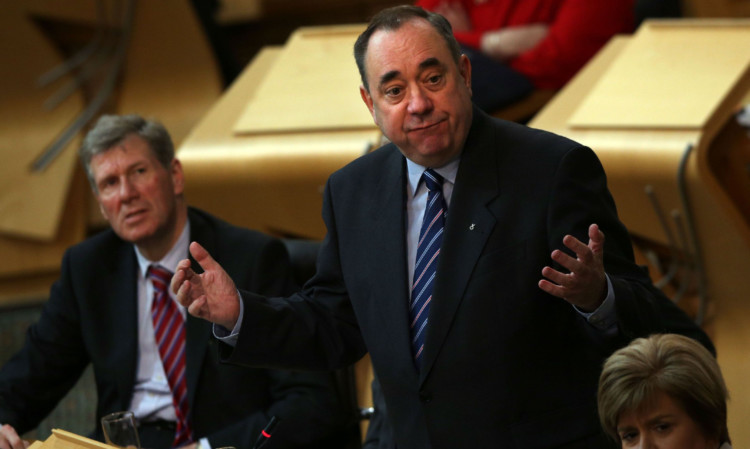Alex Salmond has blamed the financial crisis for the Scottish Government’s failure to hit primary school class size targets.
The First Minister admitted to MSPs he has not seen the improvements he hoped for in his flagship education policy.
He said the recession, and the impact it has had on funding, was one reason for this but insisted the situation was still better than when Labour were in power.
Figures published this week by the Scottish Government revealed 25 out of 32 councils were slipping further away from the aim of having class sizes of 18 pupils or fewer.
It also showed that, across Scotland, the pupil/teacher ratio has worsened in 14 councils and improved in just 10.
In 2007, the year the SNP came into power on the back of a high profile pledge that all pupils in primaries one to three would be taught in classes of 18 or fewer, the Scotland-wide pupil/teacher ratio was 13 and the average class size for P1-3s was 22.8. In 2013, they had risen to 13.5 and 23.2 respectively.
Labour leader Johann Lamont attacked Mr Salmond over the figures during First Minister’s Questions on Thursday.
She said: “Seven years on, the number and proportion of classes of 18 pupils or fewer has gone down, not up.
“Pupils in primaries one to three are less likely to be in a class of 18 and fewer than when Alex Salmond became First Minister.
“I thought Scotland was on pause, now we find it is on rewind.”
Mr Salmond stressed an agreement with the local government body Cosla to maintain the teacher to pupil ratio at 13.5 had been adhered to.
He also told Ms Lamont the “number of pupils in primaries one to three in class sizes of 18 is better than 2006” when Labour was in coalition with the Liberal Democrats at Holyrood.
The First Minister said: “There has been not just a financial crisis, which the Labour Party had a substantial hand in, but pertinently a reduction of more than £3 billion in the Scottish revenue budget.
“That has meant that public authorities have had to deal with that position. Although local authorities have been sheltered from that reduction by central Government, they face extreme financial pressure nonetheless.”
He added: “In 2006 the average class size was 23.1 in primary one, it’s now 21.2. In primary one to three it was 23.6, it’s now 23.2.
“I accept and agree these are not the improvements that we would have been looking for if we had different financial circumstances over the last few years.
“But nonetheless there have been improvements.”
